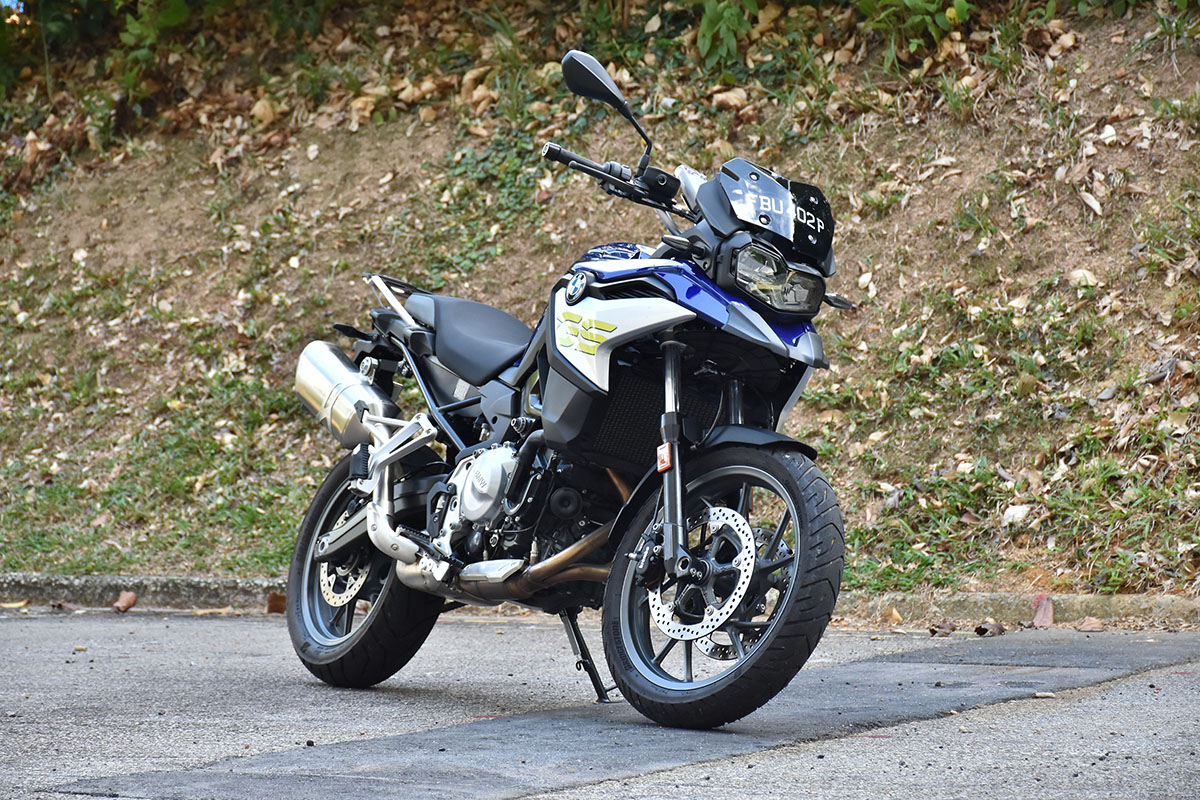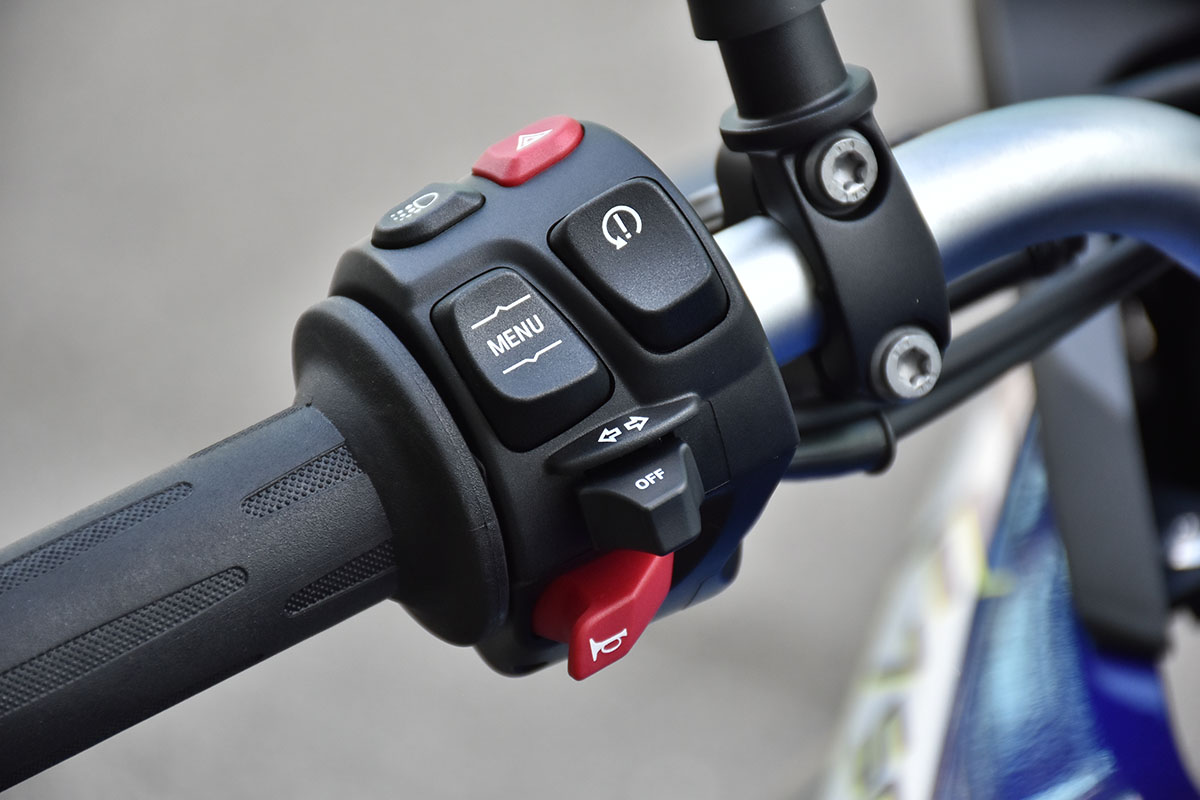2022 BMW F 750 GS review: Accessible and easy as pie

SINGAPORE - If you’re a normal-sized person and ever wanted to dip your toes into big adventure bikes, the intimidation factor of living with a 250kg hulking monstrosity is probably the biggest turn off.
That’s why the BMW F 750 GS exists – to reduce the physical barriers to adv-biking, while preserving the big adv image and feel.

Full-on adventure bikes are often big, burly, and with high-slung weight, hard to push around or to generally manhandle. Case in point, the BMW GS 1250 Adventure and Ducati Multistrada Enduro weigh more than a quarter tonne, wet.
At first glance, the F 750 GS looks broadly similar, so much so that it might put adventure newbies off, but there’s more to it.
We explain the big deal behind BMW’s big adv bike, the R 1250 GS
It’s a proper/big adventure bike with a 853cc parallel twin engine. Weighing 224kg ready to go, and with some of that weight held high off the ground, the F 750 GS doesn’t seem that approachable at first grasp. On paper, it’s almost identical to the F 850 GS – which we dubbed one of the best middle-weight adventure bikes around last time we tried it.

How to spot the difference without looking at the ‘750’ number? The short windscreen is a hallmark of the F 750 GS. For the 2021 model year (launched in Singapore this year) sees a minor model improvement for the bike, with one of the new colours being this eye-catching ‘San Marino Blue metallic’.

Both bikes have the same frame, electronics, and engine, but the F 750 GS has a more friendly 77hp, compared to 95hp for the 850. It also has a softer suspension setup (with less travel and non-inverted forks), a 19-inch front wheel (versus 21-inches), and runs on road-biased, die-cast aluminium wheels rather than spoked items.

The F 750 GS has a very manageable seat height of 815mm – some 45mm lower than the F 850 GS – and the lowest optional seat is a mere 790mm, so even those with a 30-inch inseam needn’t fear tiptoeing.

Keyless ride, now a ‘big bike’ must have, means you can leave the key in your pocket.

It’s not hard to clamber onto either, with the height difference from the 850 quite noticeable.
The cockpit layout is simple and old-school as standard. The normal bike comes with a LCD display and conventional clocks, but S$2,000 extra gets you the 6.5-inch TFT screen BMW infotainment system with easy-to-use scroller mounted on the left handlebar.

The regular instruments are good enough for showing everything from tyre pressure to riding modes and more, but if you want the convenience of app connectivity, on-phone navigation, and spiffy graphics, then it’s S$2k well spent.
Like any adv bike, it requires a bit of a shove to get off the sidestand, but you’re rewarded with the parallel twin engine’s bark that’s just like a growly L-twin because of the firing order. It’s the same powerplant as the BMW F 900 R, where we found it to be fun, grunty, easy to get along with, and economical.

But once you start riding the 750 GS, that’s where the impression of excessive size starts to fade away, as it’s extremely easy to get to grips with.
Measured fuelling, a light clutch, good overall balance, and an up-down quickshifter means you can creep around at low speed with ease, which makes for a good experience in and around town. Being a parallel twin with a modest handlebar span, it’s also not too wide, making lane-splitting easy.

Out on the highway, the 77hp is just right for Singapore with enough power for most situations. The minimal windscreen means you’re exposed to the elements, but the F 750 GS isn’t meant for high-speed touring anyway, and there’s a plethora of official and aftermarket options.

Doing the NS highway at around 100-120km/h should be fine, but not too far above that, unlike say a BMW R 1250 GS.
That’s because the suspension setup is quite soft and relaxed, which means you can straightline speed humps and are unbothered by bad road conditions, but you do have to take it easy in the bends. It’s not lazy, but you need to ride ‘ahead’ of the suspension. If you want more capability, electronic adaptive suspension (ESA) is optional.

It’s quite frugal for a big twin, with our test bike roughly ekeing out sub-4.0L/100km consumption, making for a theoretical 15-litre tank range of more than 300km. The riding modes do offer some flexibility with the electronics – there’s even an Enduro mode – but the overall character of the F 750 GS is one of tractability and relaxed capability.

While the F 750 GS is primarily a road bike that can handle light off-roading, we tested the previous F 750 GS off-road at BMW Motorrad’s Enduro Park Thailand, and there’s no reason this one shouldn’t be just as capable, or even better, when the going gets rough.

Rocking the previous F 750 GS at Enduro Park Thailand
Our gripes are minor. The low seat seems to create a dip where it meets the tank, resulting in slight discomfort if your nether regions happen to be wrongly placed as you brake – female riders will not have this problem, obviously. At S$45,800 machine price, it’s not cheap, but no BMW is. At least it does come with a COE rebate and some discounts (BMW Motorrad says enquire) as well as free panniers (not pictured).
There are a wide range of midrange adv bikes to choose from these days, everyone from Triumph to Ducati has one, but the F 750 GS is one of the best ways to enter the big adv bike world, because it’s big in all the right ways, but manageable where it counts too.
| Drivetrain type | Petrol only |
| Engine | 853cc, parallel twin |
| Power | 77hp at 8250rpm |
| Torque | 92Nm at 6250rpm |
| Gearbox | 6-speed manual with up-down quick shifter |
| Wet Weight | 224kg |
| Top speed | 4.1 seconds |
| Seat Height | 815mm (790mm optional) |
| Agent | Performance Motors Limited |
| Price | $45,800 (machine only) |
| Availability | Now |